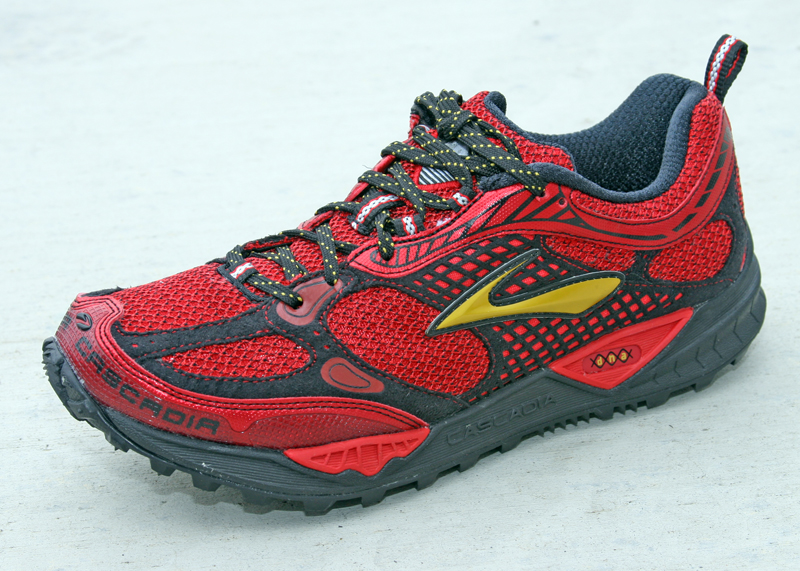By Tom Demerly.
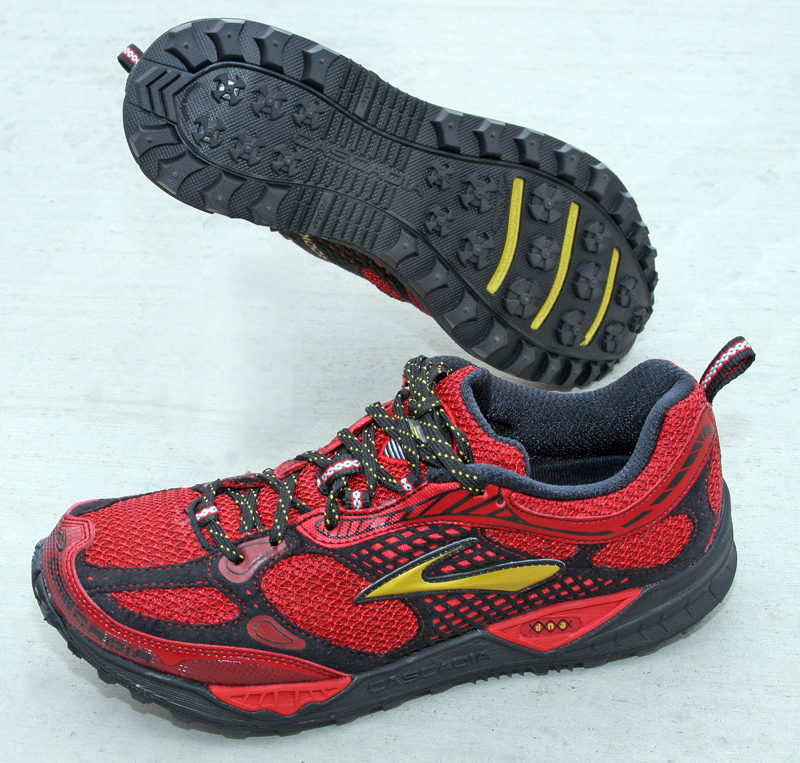
The Brooks Cascadia lineage of trail shoes has won so many awards it’s hard to imagine Brooks making many changes from version to version. In it’s previous iteration, the Cascadia 5, the only criticism reviewers from Outside magazine could find was the laces.
The Brooks Cascadia 6 looks outwardly a lot like two previous versions but enjoys a few meaningful tweaks to make a great trail shoe even better. The Cascadia has never been a trendy shoe. It is solid running design from a solid running company. Although it has been lowered a trifle from previous versions it isn’t a minimalist or low drop shoe. The heel is 32.5 millimeters deep measured and the toe rides 22.2 millimeters measured height for a drop of about 10 millimeters. As a result the shoe rides high and soft, making it nice on the hard-packed level trails and forgiving on the rocky descents to the north of Tucson, Arizona where I did my tests this fall.

A big part of the cushioned feel comes from forefoot and heel Brooks DNA cushioning systems. These shock absorbers are installed independently in the forefoot and heel to take up foot strike. The DNA shock absorbers ride inside an encapsulated Brooks Bio Mogo midsole sheathed in durable carbon rubber outer. Brooks also added a fourth “Pivot Post” on the medial forefoot to give the Cascadia Mark 6 greater forefoot stability.
Having run recently off road in several Montrail, Salomon and Adidas styles along with the Brooks Cascadia 6 my overwhelming impression from Cascadia 6 is one of stability- even more so than cushioning. This is likely due to the width of the midsole and outsole at the arch and the medial posting in both the forefoot and heel. A “rock strike” layer is built into the midsole to prevent you from feeling sharp rocks. This has always been a useful feature of the Cascadia, especially in Tucson. This stiff layer likely also improves lateral stiffness of the midsole. And speaking of this sole assembly, a large portion of my local trail was recently paved so my first mile is now done on pavement. The Cascadia 6 rides well (but high) on pavement and isn’t excessively stiff as I’ve found with some off-road runners taken into the civilized world. Still lots of cushion-soft ride even on pavement.
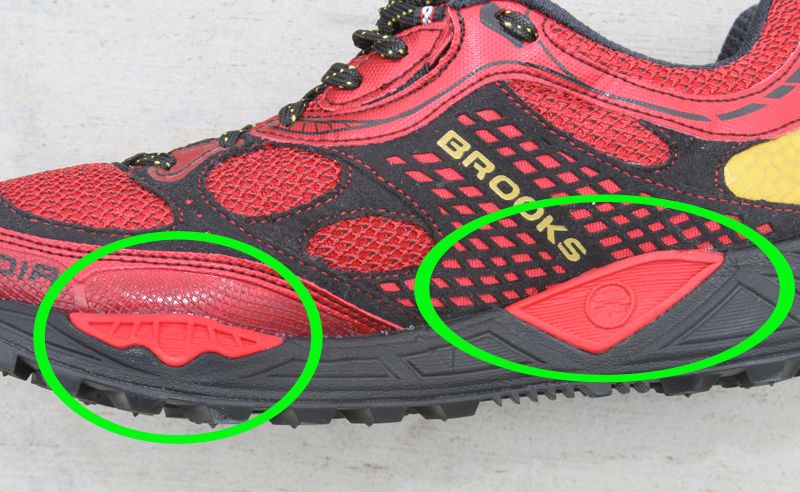
No mention of a trail shoe is complete without commentary on traction. Especially descending, traction can be a boon or bust. Brooks has found a reasonable middle ground between adhesion and not getting your foot stuck at an off-angle and twisting an ankle. Even descending rocky trails I found them to have about the grip I’d like. A big part of the good traction is owed to the nice midsole design. It allows the outsole to work well by providing a reasonable level of conformity to the terrain for my 170 pound frame.
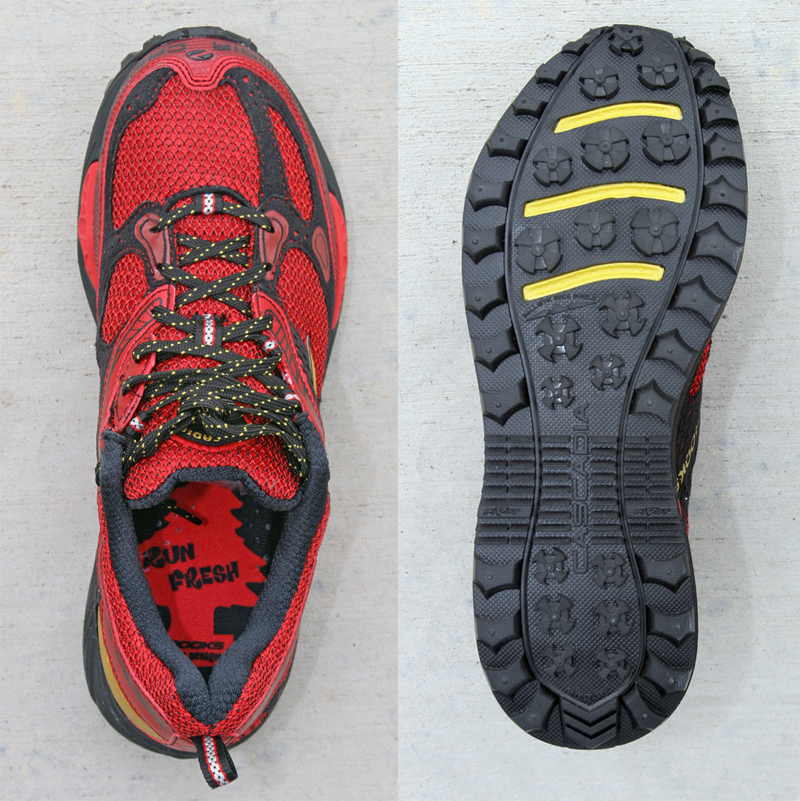
Brooks changed the lacing system to webbing eyelets on the lateral side of the shoe. Some previous versions used a lacing system that partially “wrapped” the forefoot to control volume and couple the upper to the sole more snugly. That wasn’t a bad system, but it isn’t missed on the current Cascadia 6. Fit is better than some Brooks road shoes in my opinion, very “down the middle” for my absolutely average volume size 9.5 feet.

The remainder of the upper is “Hydrophobic Mesh” that is not waterproof but allows for adequate drainage. Since the shoe won’t get soaked or hold water it won’t gain much weight when wet.
There have been several treatments to the toebox on the Cascadia. In general trail shoe designers seem to look on toe boxes as a place to add off-road styling that make the shoe look like a trail shoe. It adds unnecessary weight. Brooks resisted the temptation on the “6”. The Cascadia 6 has a full synthetic wrap toe box with a clear polymer grid layer for added protection. It isn’t excessive and it provides plenty of protection.
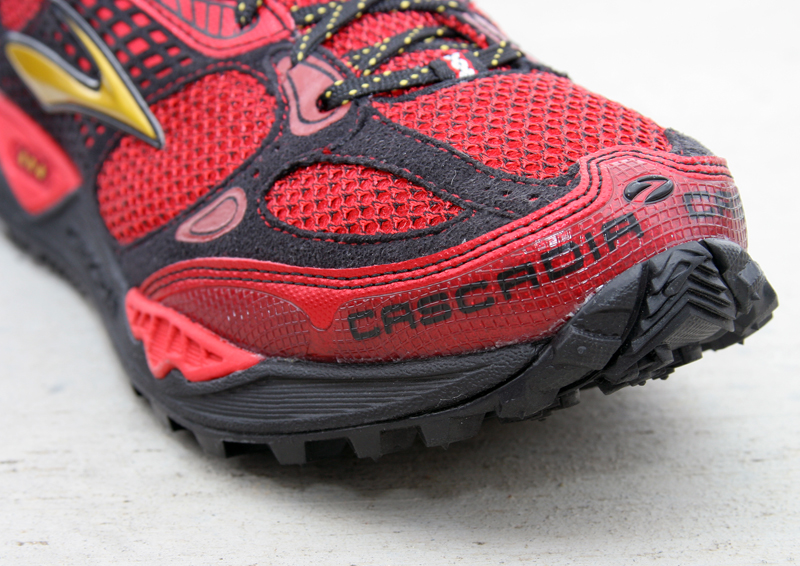
The great fit, handling and under foot feel of the Cascadia 6 likely come from Brooks’ heritage as a running shoe company before being a trail shoe company. Many trail runners are lightweight hiking boots on a diet. While this design theme has its place that place may not be out for a trail run. The hybrid hiker/trail shoe is better suited for a day hike than a training run. The Cascadia 6 is still a running shoe from a running company.
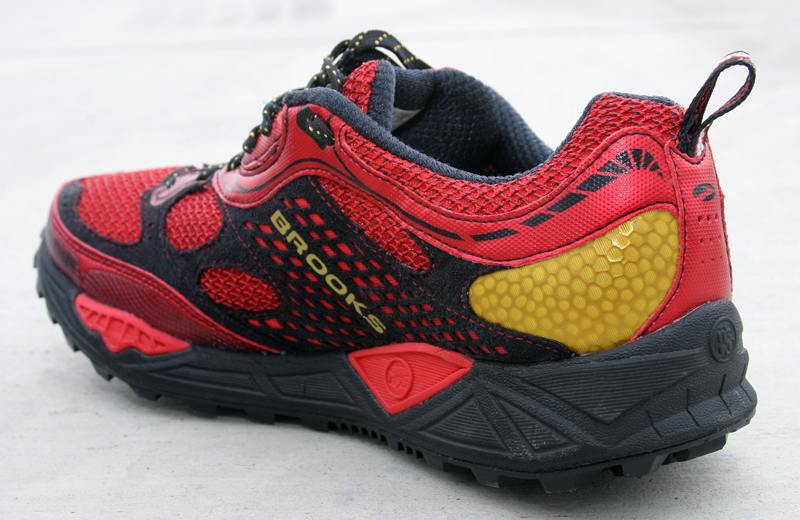
I’ve seen concept drawings of proposed future Cascadia designs with novel side-lacing systems and other radical departures from the generally conventional Cascadia design over the previous three versions. I got another pair of Cascadias in the “Mark 6” version while the gettin’ is good. Brooks isn’t prone to trendy overhauls of existing designs but with a shoe this good an extra pair is cheap insurance against any possible re-designs that may not be as future proof.
